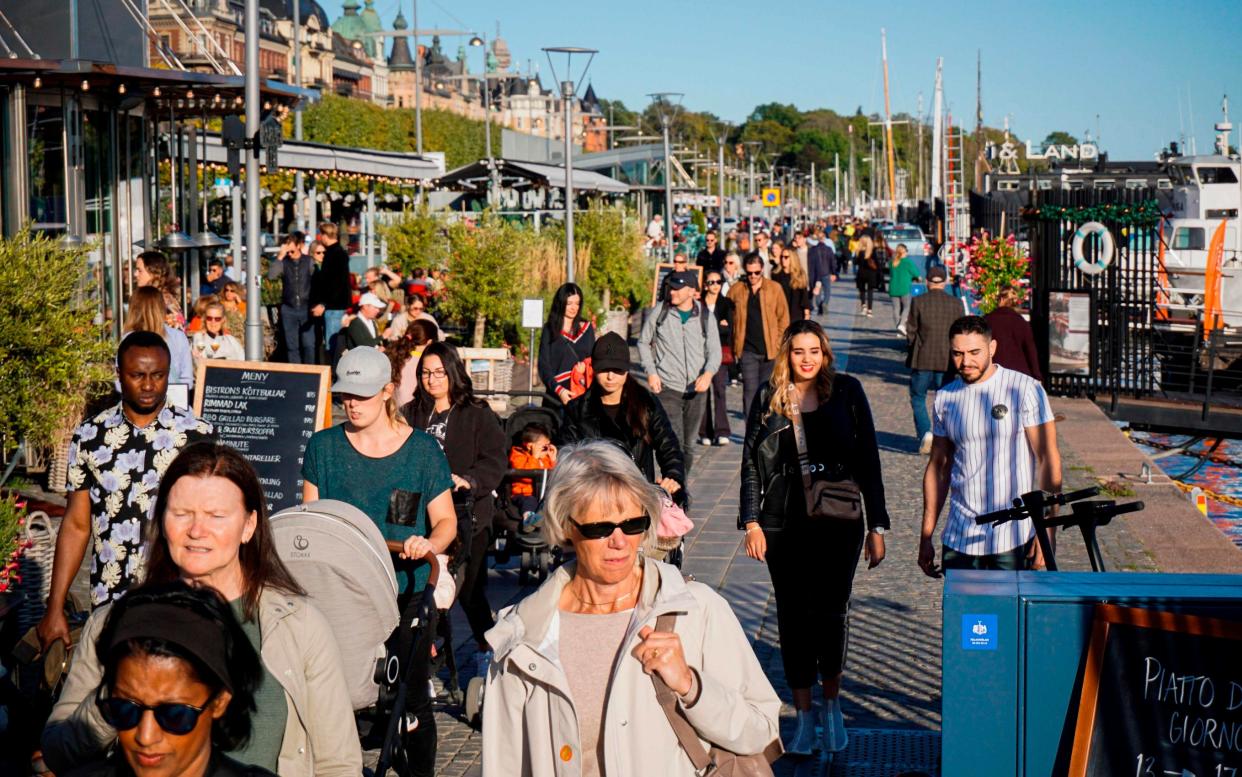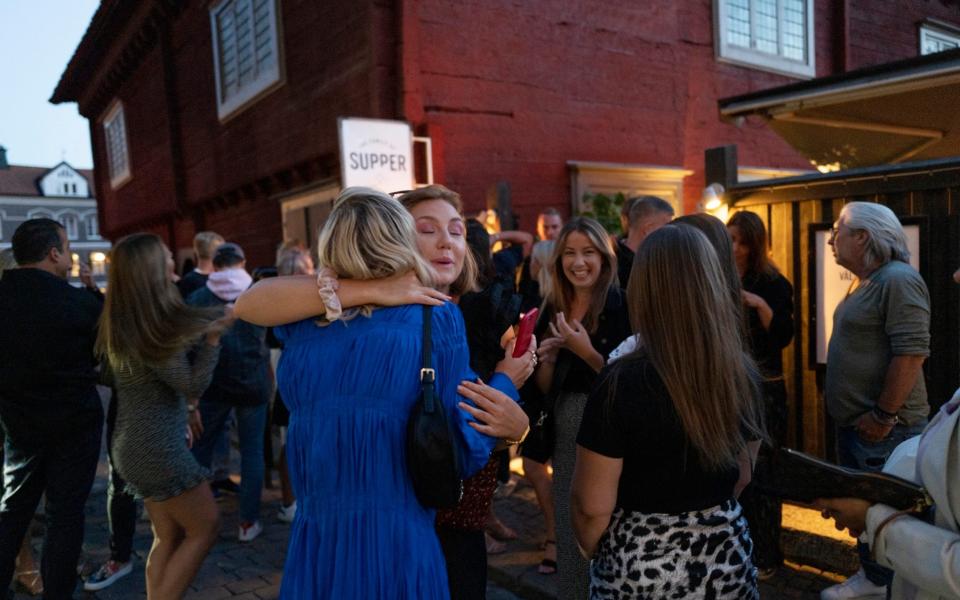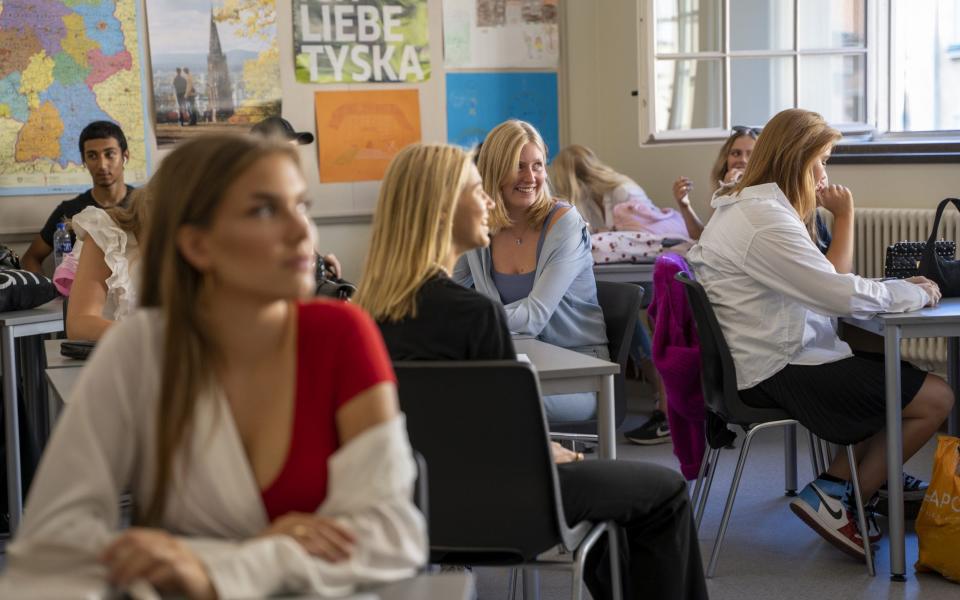The joy of freedom: why it's now finally time for me to feel smug about living in Sweden

It had begun to feel like the pandemic was over in Sweden, that we would be spared the resurgence in infection seen elsewhere in Europe.
Then on Tuesday, a slight rise in cases and the prospect of targeted local restrictions came as an unpleasant reminder. That and being chucked out of the café near the Skåne coast where I was working last Saturday.
"Do you have a cold?", the man behind the counter asked. "Because the family who was here, they said you were coughing." I offered to leave, hoping it wouldn't be necessary. But it was. "I'm sorry, corona times, but yes, that would be best."
For me, this was significant chiefly because of how unusual it was. Since the pandemic hit in the middle of March, Sweden has remained so calm, and its restrictions been so gentle, that it has often felt like a crisis happening elsewhere. Looking at the raised tempers, blame, hysteria and sense of panic over in the UK, the calm here has felt surreal, and something to be grateful for.
The episode also added to my first-hand evidence that Swedes are largely continuing to abide by the public health agency's recommendations - keep your distance, keep good hygiene, and stay home when you're sick (I suppose I might add, although it's not a recommendation, report on fellow customers who don't).
Even as Sweden's state epidemiologist Anders Tegnell on Tuesday and Thursday outlined his agency's new strategy of highly targeted local restrictions to quickly end outbreaks, he reiterated the importance of setting restrictions on a national level that are sufficient but light enough to be kept in place for the duration.
At the end of April I remember bringing my children home from the bustling playgrounds of Malmö's Folkets Park to do a video call back home and discovering something that hadn't yet really sunk in: their English cousins had not left the grounds of their house for six weeks.
It struck me then how fortunate we've been, with school, sleepovers, and weekend birthday parties continuing more or less as normal. Apart from outside gym classes and more handwashing, the biggest change for my children has been the emergence of a new version of tag, called, of course, coronavirus.

It isn't as if Sweden has been less badly hit. When we made the call, the weekly per capita death rate was shortly to overtake that of the UK. That month, 2,544 people in Sweden died of or with the virus, about five times as many as died during either the Asian Tsunami or the MS Estonia ferry disaster. The death count is now closing in on 6,000.
But while those disasters are seen as national tragedies, the coronavirus pandemic doesn't feel that way.
At the end of May, when Sweden briefly had the highest death rate in the world, the freelance collective where I work held their summer party at one of their houses in the country.
By the start of June, when the death rate was still stubbornly high, I was spending mornings working by an open-air swimming pool in the Skåne countryside while my children had swimming lessons and my wife launched her new project, building a summer house on a forest plot.
Perhaps the parents on the poolside sat a little further from one another. One of couple with a summer house nearby isolated themselves so the husband's diabetic father could visit. Our building supervisor initially held meetings online as she is over 70. But otherwise, we and our friends barbecued, swam, and hung out as normal. And none of our contractors seemed affected at all. As in the UK, the local beaches and swimming spots were, if anything, unusually crowded.
The toughest thing has been being unable to see grandparents. We had to cancel our summer visit to the UK. And my wife's father and mother, like most over-70s, have both been very careful, in April and May even getting others to shop for them. The greatest scare came in June, when a neighbour my wife's mother had included in her social bubble tested positive. Both were fine. It was only this month that she drove down to see her grandchildren.
When commentators internationally judge Sweden's decision to keep primary and lower secondary schools open, to keep open bars, restaurants, sports clubs, and shopping centres, they tend to point to things that can be measured, the death rate versus the economy.
But this misses out on an intangible but important benefit, the surprisingly upbeat public mood. I am not sure it is right or even possible to weigh the greater calm of ten million against the early deaths of nearly 6,000, but I feel it is worth something.
When I crossed the bridge to Denmark this month and wore a mask for the first time, I was surprised at the psychological impact. I felt threatened, Copenhagen under siege. I suspect it must have been the same elsewhere with stay-at-home orders, curfews, closed shops and bars.

Looking at Sweden's relatively high death rate, you might think there would have been a sense of panic, but there never was.
While in the UK, many are angry and distrustful of their leaders, most people here are glad that politicians stood back and let the rational and reassuring state epidemiologist Anders Tegnell set the strategy.
Sweden has drawn attention for not locking down, but few notice the extent to which it has kept the light restrictions imposed at the end of March in place. Previously locked-down Denmark and Norway in the summer allowed events for up to 100 people (200 in the case of Norway), and opened up amusement parks. Denmark even allowed the crowds back to the football stands. Sweden did none of this.
As few as six per cent of people wear face masks, but people do still keep their distance in supermarkets and on public transport. Me and my Swedish wife self-isolated when we were ill with probable coronavirus in mid-March (I've had two antibody tests, one positive, one negative). When the country was hit by a wave of back-to-school colds earlier this month, my wife, like most Swedish parents kept my son home, though I complained he had barely a sniffle.
While people in the UK are now braced for whatever new restrictions are on their way, Sweden's record shows that whatever comes to Sweden will be light enough or short-lasting enough to bear.


